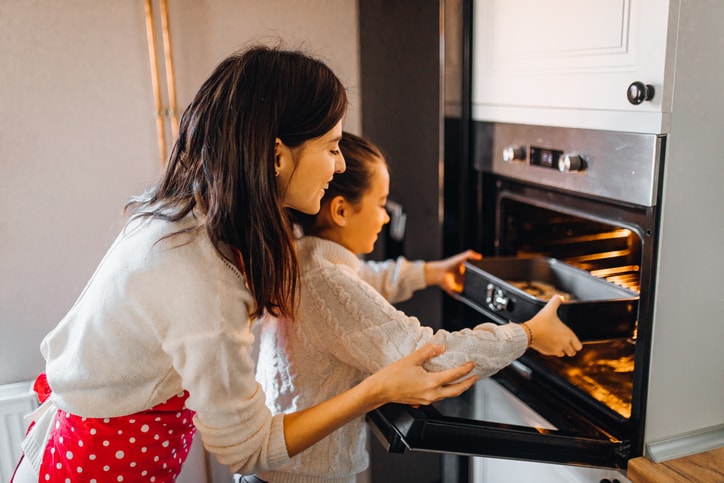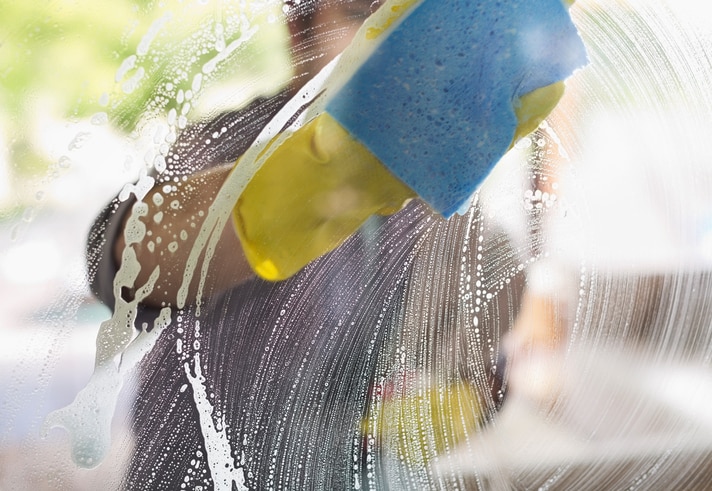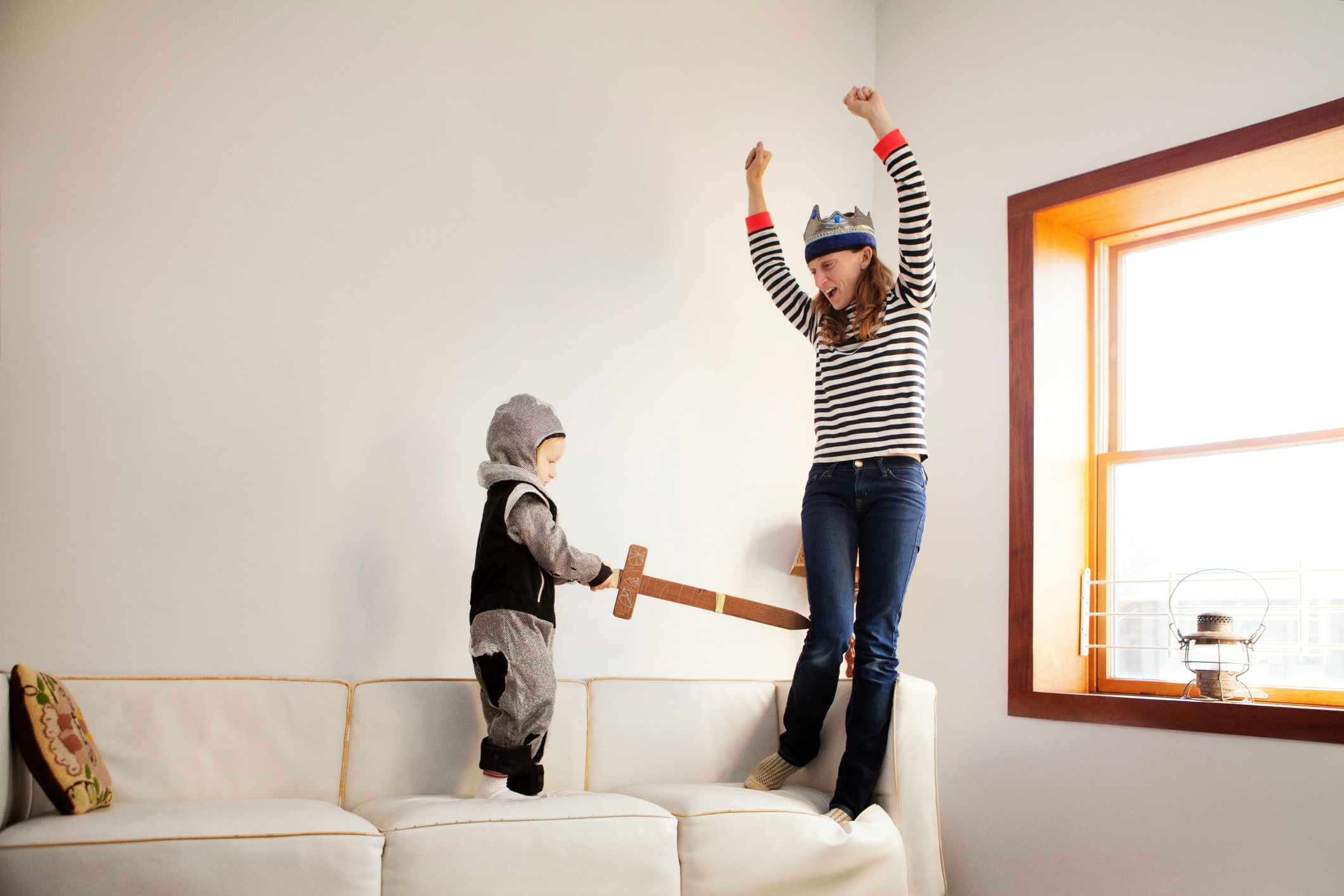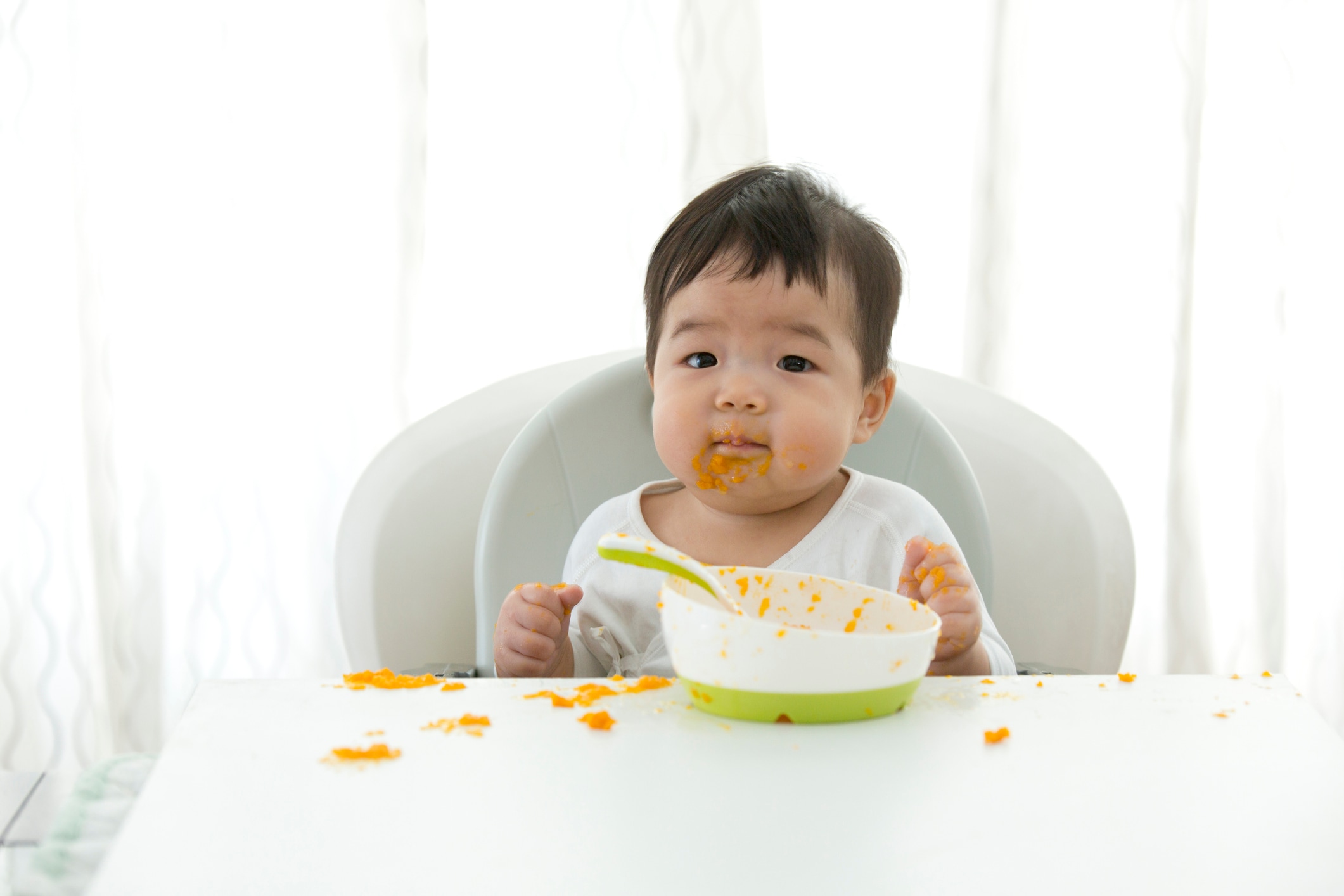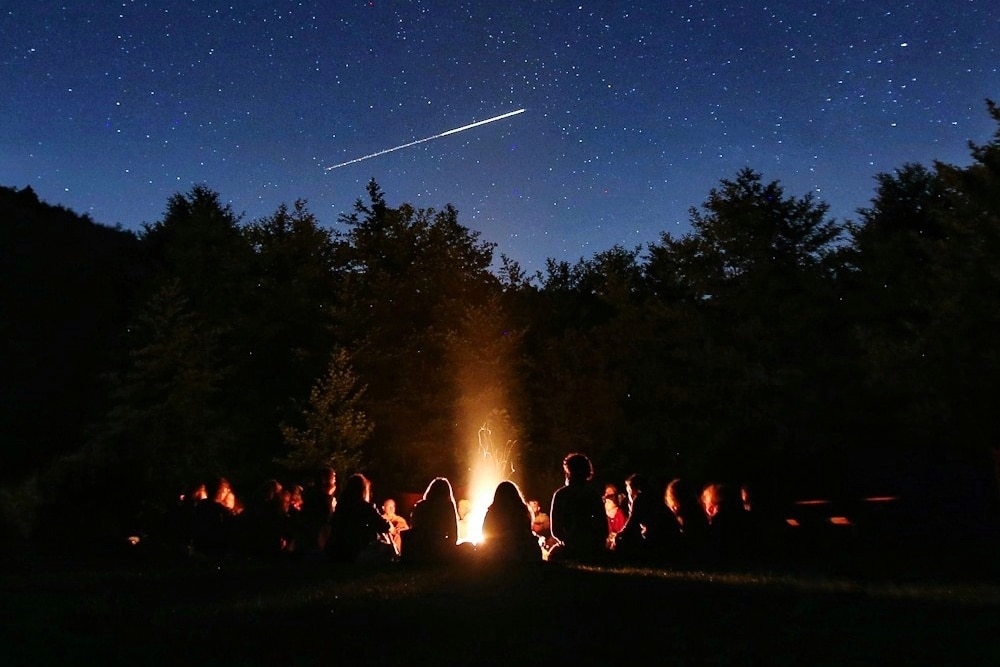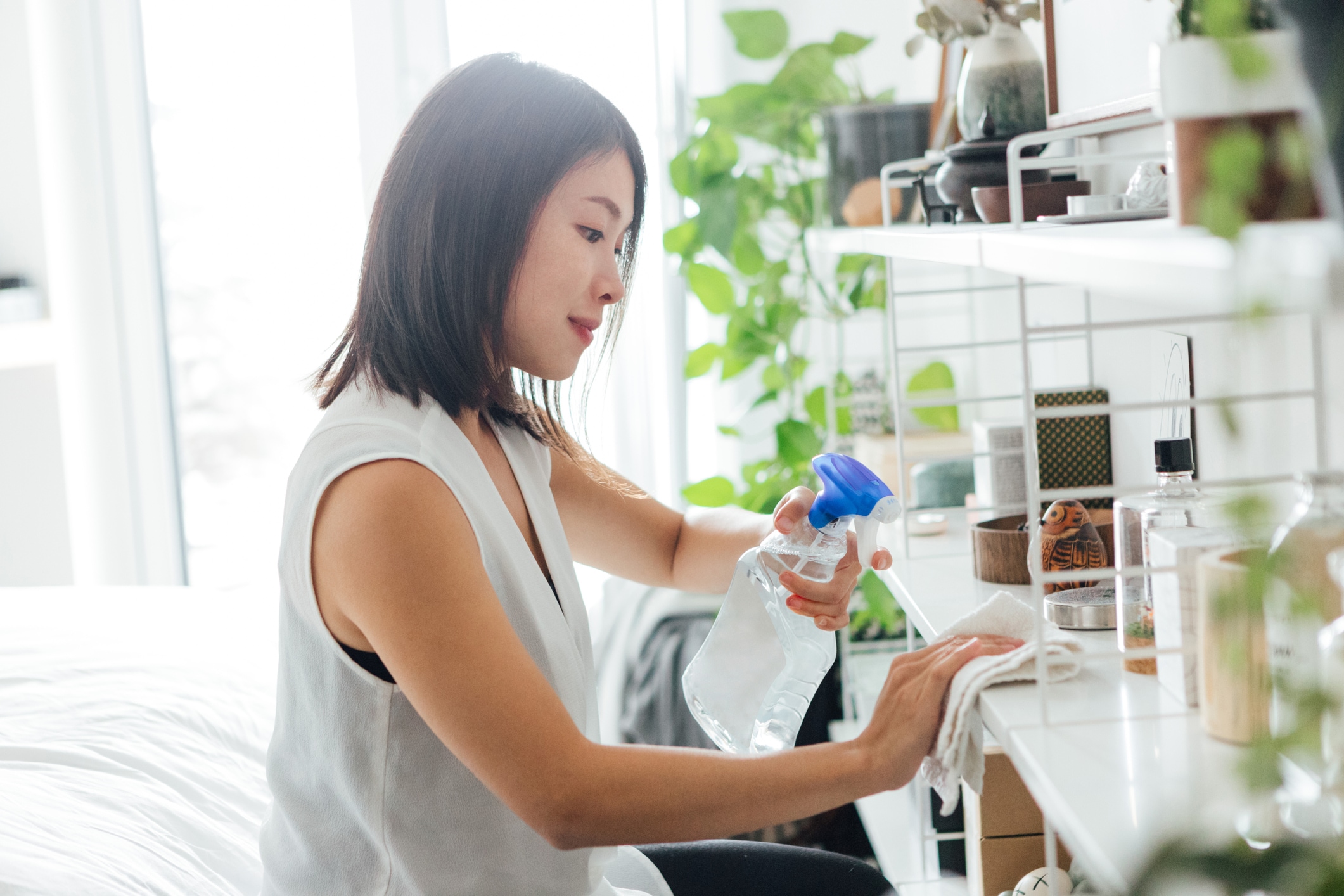During the holiday season, your mind is on all the shopping, wrapping and just how many days of school the kids have left until they descend upon your house for break expecting holiday magic to appear. You likely aren’t focused on battery security, fire prevention and other holiday safety concerns. But, given the data that shows thousands of injuries and accidents occur around the holiday season each year, it might be time to give your safety plans a bit of a tune up.
“It’s true that holidays can bring a number of stressors along with fun memories,” says Dr. Shannon Godsil, a pediatrician at Children’s Physicians in Omaha, Nebraska. “It’s easy to miss a potential hazard for your child when you are trying to clean a home, do your holiday shopping or make a family meal.”
It’s important to give yourself grace in knowing that you are doing all that you can to have a safe holiday, Godsil adds. Here are some key holiday safety tips from the experts to keep in mind as you prepare for the celebrations ahead.
Why is holiday safety important?
The last thing many parents and caregivers want on their minds is dangerous accidents related to gifts and holiday decor that are meant to bring joy. But, household accidents and injuries are common this time of year. According to the Consumer Product Safety Commission (CPSC), at least 145,500 emergency room (ER) visits and 11 deaths in 2022 were caused by toys. This includes everything from scooter accidents to kids swallowing or choking on batteries and other small items.
It’s also a good time to inspect fire alarms as you get out the Christmas tree, menorah or kinara and festive candles that can increase the risk of fires. The National Fire Protection Association reports that one in five Christmas tree fires are caused by bulbs or lamps. And, according to the CPSC, cooking — a traditional part of nearly every holiday celebration — is the leading cause of residential fires.
Luckily, there are things you can do to decrease these risks. Keep an eye out for these common sources of accidents and injuries, and combat them with the following holiday safety tips.
1. Look out for gift and toy safety hazards
The CPSC warns that this is a time when well-meaning gift-givers might turn to less credible online retailers to find unique toys, some of which don’t meet the same standards that a typical brick-and-mortar store has to maintain. So, the holidays are a great time to keep an eye on new items coming into your home. Here are the toy safety hazards to look out for.
“One of my favorite parenting hacks is to open, assemble and set batteries into new toys ahead of time. It will save you a headache later on and give you more control over those risky items.”
— Angela Campos, registered nurse and injury prevention specialist
Button batteries
“Button batteries pose a huge risk if ingested,” says Angela Campos, a registered nurse and injury prevention specialist at Cincinnati Children’s Hospital. “One of my favorite parenting hacks is to open, assemble and set batteries into new toys ahead of time. It will save you a headache later on and give you more control over those risky items with time to clean up and put them away safely before kids are in proximity.”
Choking hazards
“Remember that many gifts intended for adults can be dangerous to young children in the home,” says Lara B. McKenzie, the principal investigator for the Center for Injury Research and Policy at Nationwide Children’s Hospital in Columbus, Ohio. “For example, high-powered magnets, often sold in sets of tiny balls as desk toys or stress relievers, can cause serious injuries when they’re unintentionally swallowed by curious young children or teenagers imitating lip or tongue piercings.”
Too-advanced toys
Sure, your older child might want a scooter or your toddler might overestimate their biking abilities. But, just because something is on a kid’s wish list doesn’t mean they are ready for it. Dr. Kathryn E. Hodgdon, an emergency medicine and pediatrics provider at Children’s Hospital in New Orleans, says adults should read instructions carefully and only give kids age-appropriate and ability-appropriate gifts.
Missing safety gear
“Many children are excited to put new gifts to use, so we see many orthopedic injuries, head injuries and skin and soft tissue injuries from gifts such as new scooters, hoverboards, skateboards and bicycles,” says Hodgdon. “Ensuring the child is also outfitted with and using appropriate protective gear, including helmets, wrist guards, knee pads, etc., can help alleviate many of these injuries.”
2. Practice Christmas tree safety
Christmas trees can give a serious cozy and festive vibe to the room. But, sadly, they can also fall on small kids, be a fire hazard or hold decorations that are too small and too sharp. Experts say to keep these Christmas tree safety tips in mind:
- Check around the tree for shattered ornaments frequently.
- Only turn Christmas tree lights on when you are at home.
- Check for freshness by banging the tree on the ground before buying it — if lots of needles fall off, it’s likely older, drier and more of a fire hazard.
- Use only non-combustible or flame-resistant materials to decorate a tree.
- Keep the tree away from heaters or fire places.
3. Choose kid-safe holiday decor
“Be aware of the size of the decorations you are placing around your home,” McKenzie advises. “Many small decorations can be choking hazards for young children. Other large decorations may have parts that can break off into smaller, sharp pieces that can be quite dangerous. Either save these decorations for when your children are older or place them high out of reach.”
“Kids are curious, so anticipate things that might be out of the ordinary and more intriguing to them.”
— Angela Campos
4. Keep an eye on fireplace safety
Sometimes the danger of the holiday season comes with being out of your normal routine or in an unfamiliar environment. For example, if a kid is visiting a relative’s house, they might not be used to avoiding commonly dangerous areas. “Kids are curious, so anticipate things that might be out of the ordinary and more intriguing to them,” Campos says.
This is especially true of fireplaces. “Fireplaces can be a source of injury for young children, especially if they’re not used to having one at home,” says McKenzie. “To a baby, toddler or young child, flames in a fireplace are a new thing they want to explore. Use a sturdy screen in front of the fireplace to keep little hands out and hot embers in. These screens can get hot too, so remind children to look but not touch.”
She offers this rule of thumb: If it feels warm to you, it’s too hot for kids to touch.
5. Prevent burns and kitchen injuries
“Children of all ages present to ERs with burns and injury from open flames, hot liquids and surfaces, steam injuries and they also can suffer from smoke inhalation and carbon monoxide poisoning,” Hodgdon says.
Since candles are a large and meaningful part of many holiday celebrations, make sure to keep kids under full supervision when they are lit.
When it comes to kitchen safety, McKenzie says using back burners on the stove can be safer than using the front burners. “Set up a kid-free zone that extends at least three feet from the stove and oven to prevent potential burns,” she advises. “For younger children who want to help in the kitchen, decorate holiday cookies together or ask them to help wash fruits and veggies.”
6. Practice safe sleep for babies and young kids
Sure, you are all set up with a safe sleep area for babies and young kids at home. But, when you’re on the road, things can get more complicated without planning ahead.
“Families should consider where their children will be sleeping while away from home or when there are guests staying in their home,” McKenzie says. “Remember, infants younger than 1 year are safest sleeping alone, on their back and on a firm surface, like a portable play yard or portable crib.”
While it’s tempting to rely on hotels to provide a crib or Pack ‘n Play, you don’t want to arrive after a long trip only to hear them say none are available. Bring your own equipment and have a plan.
“Holidays are often a time of gathering with family and friends. Be mindful that young, curious children explore the world using all of their senses, and not all homes are child-proofed for such exploration.”
— Dr. Kathryn E. Hodgdon, emergency medicine pediatrician
7. Take steps to prevent household accidents
“Holidays are often a time of gathering with family and friends,” says Hodgdon. “Be mindful that young, curious children explore the world using all of their senses, and not all homes are child-proofed for such exploration.”
Hodgdon warns that purses, bags or unlocked cabinets can lead to accidental exposures to dangerous items, such as:
- Medications.
- Toxic substances.
- Cleaning supplies.
- Alcohol.
- Illicit substances.
- Guns and/or other weapons.
“Do a sweep of the house for any unstored chemicals, cleaners and medications,” says Campos. “Take that opportunity to check cabinet locks, door knob covers, gates and medication lock boxes. If you have guests or are staying in someone else’s home, take the time to know how medications are stored so they are not accessible to curious kids.”
8. Make a holiday safety plan
Do you know where the nearest ER is at your Aunt Gertrude’s super cool secluded cabin? It might be time to check. “Try to locate your closest emergency room wherever you’re traveling,” says Dr. Alexis Monique Javier, a pediatrician at Memorial Hermann in Houston.
It’s also a good idea to locate the nearest urgent care or to discuss telehealth options with your pediatrician in case of unexpected health problems or injuries, she adds. “Try to avoid the emergency room and instead opt for urgent care if it is not an emergent situation to prevent bringing home any unwanted additional illnesses,” she says.
“If you have any questions about how to stay safe this holiday season, or specific medical concerns, reach out to your pediatrician,” Godsil advises.
The bottom line
The holiday season is a common time for accidents, but there are plenty of ways to keep everyone safe. Not only can these holiday safety tips help prevent unsafe situations, but they can also provide a moment to pause and prepare for the busy days ahead. A bit of self-care goes a long way towards making sure you have the bandwidth to notice the small details, from a button battery about to fall out of a toy to that sharp ornament your toddler has their eye on.
“Holiday stress is real,” says Hodgdon. “I encourage parents, families and caregivers to take care of themselves this holiday season in order to be best able to care for their loved ones. I truly believe that in order to successfully care for others, to ensure their safety and wellbeing, we must first best be able to care for ourselves.”
